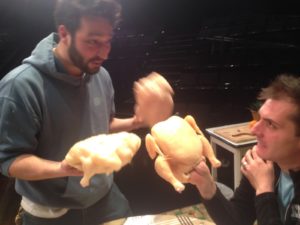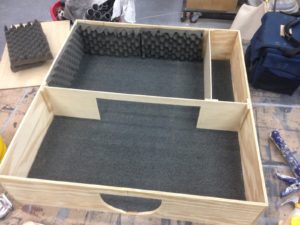“Having Our Say” at Long Wharf Theatre
As anyone who has worked with me in the past couple of years knows, I am a fanatic about Qlab. That program has really changed what is possible, especially on the shows where I am allowed to run rampant, creatively – I can output, or control, all of the elements I come up with for live performance.
So when I got the call from Long Wharf Theatre in New Haven to work on their upcoming revival of “Having Our Say” because they needed a Qlab guy, I was beside myself. I was told what they were looking to do, and asked if Qlab would handle it. I said “Yes” emphatically. It would most certainly do all of that. I was also looking forward to working on this show because I worked at Long Wharf back in college – a long time ago – and hadn’t been back, since I went off to do corporate and tours and stuff. I was glad I did this – this is one cool space, with nice people and it’s cleverly worked out, like a boat builder designed the shop. Love it. I’ve been here a lot, making this and that work and building things like baffle boxes for the projectors.
(Is it a doll house or a baffle box? You decide…)
Over the course of the tech process, the entire design changed. Like, a lot. The show was opening in New Haven, and then moving on to Hartford Stage. So change was inevitable. However, part of this meant going places I hadn’t taken Qlab before (and using advanced features I didn’t know were available). In the end, we delivered a great looking show and the audiences responded. There were glitches throughout the tech process, some big and some smaller, and in the end we had to watch for those – but the little nagging things that remained were things that 99% of the audience would never notice. Just those of us working on the show, day in and day out, knew they were there. Qlab’s technical support was on the line with me throughout the tech process, and in the end we ended up maxing out our Mac Pro’s GPU.
The story is a biography about two women, both over 100. They are sisters, who grew up in the segregated South. Going through their family photos and stories, they have seen a lot, and it is a much more engaging show than you might initially think.
To help tell their stories and make the photos come alive for the audience, we projected images onto the walls of the set. Eventually, those images became videos, to provide effects and transitions. Moreover, we slaved video and audio playback computers together and then triggered them from the light board, so that the audio engineer could just focus on mixing the show. I also built a network to connect the projectors to, so that we would have LAN access to their power, focus, color correction, and shutter controls. All of this was controlled during the show, as needed, via Qlab with Applescript, MIDI and OSC. No need for IR remote controls or getting up on ladders once they were hung.
My wife will be involved with the show when it heads up to Hartford Stage. Yay!
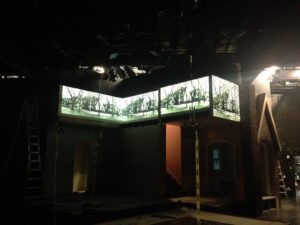
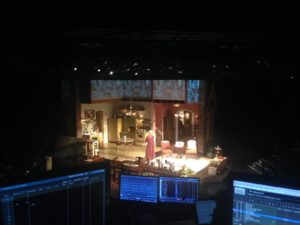
As a side note, this show really focused on realism. Not only did the set dressings get very extensive, but since the characters are making dinner during the play and the entire script breaks the fourth wall, they spent a lot of time developing ways to fill the theatre with cooking smells! Combined with the amazing props department at LWT, it was very impressive. My technical intern at Fairfield U, Logan, now works at LWT, and it was her job to cook. 🙂
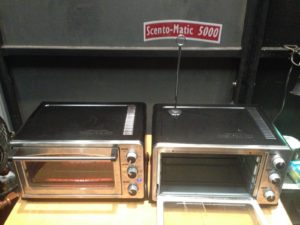
I call this one “Two Men Discussing Roast Chicken”
